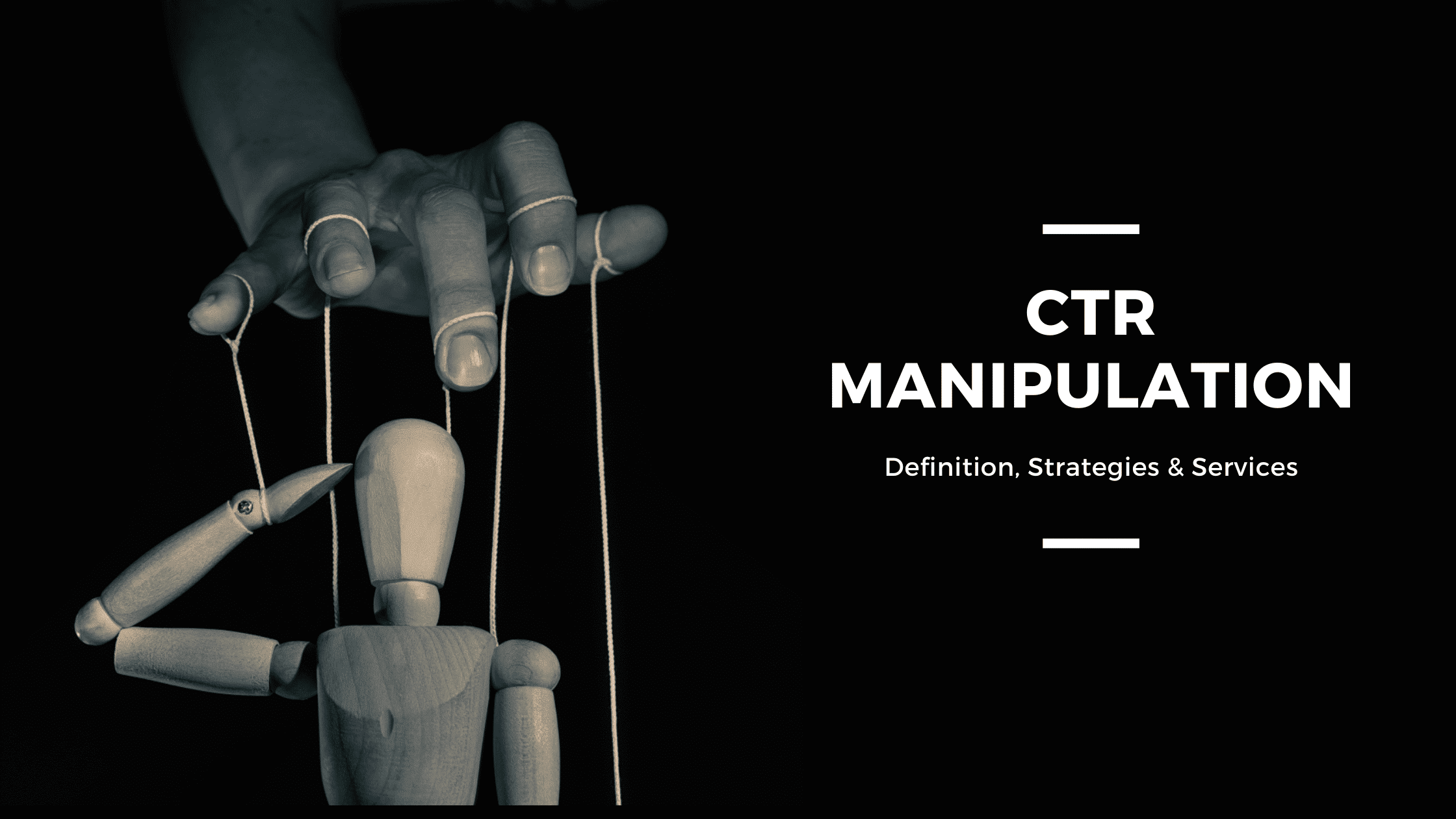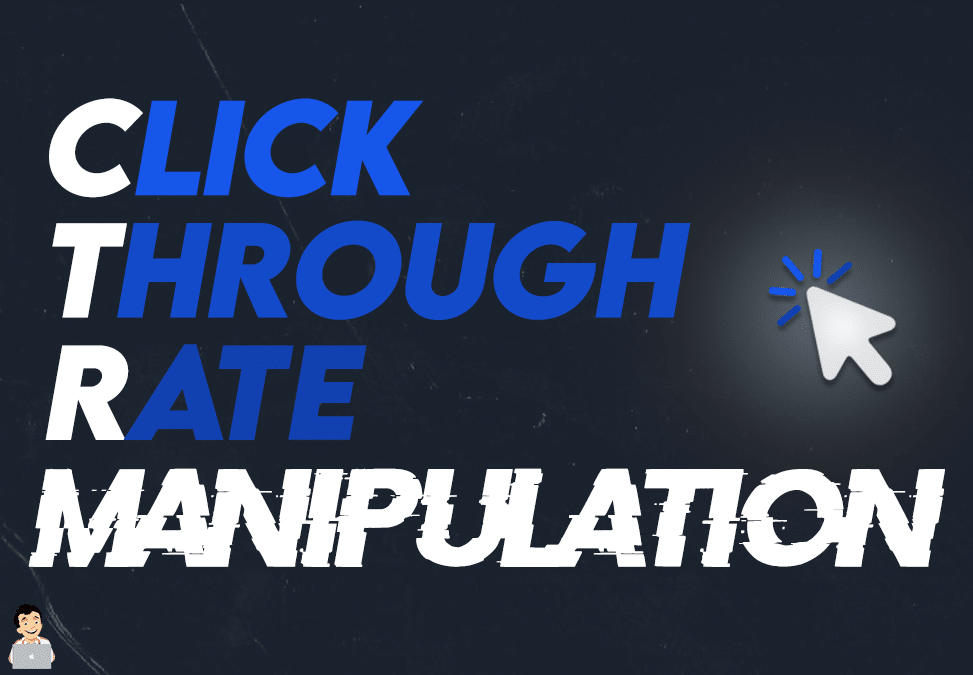Achieving Success With Targeted CTR Control
The optimization of click-through rates (CTR) is an essential undertaking for brands intending to boost their digital existence and maximize involvement. Targeted CTR control encompasses an array of approaches, from data-driven ad positionings to the development of engaging content customized to specific target markets.
Comprehending Click-Through Rates
Click-through rates (CTR) function as an important metric in digital advertising, reflecting the effectiveness of on the internet web content in driving customer involvement. This metric is computed by separating the variety of clicks an advertisement or link obtains by the overall number of perceptions, shared as a percent (CTR Manipulation Service). A greater CTR indicates that the web content resonates well with the target audience, prompting them to do something about it
Comprehending CTR is essential for online marketers aiming to maximize their campaigns. Different variables influence CTR, including advertisement placement, design, and the relevance of the web content to the audience's interests. For circumstances, compelling headlines and aesthetically attractive photos can significantly enhance the chance of individuals clicking on a link.
Moreover, the context in which the material is presented plays a vital role in identifying CTR. Advertisements presented at tactical times or throughout relevant occasions are most likely to catch focus. By assessing CTR information, online marketers can determine trends and locations for renovation, enabling for more targeted techniques. Ultimately, a complete understanding of CTR equips marketing professionals to improve their techniques, making sure that electronic campaigns attain their desired outcomes properly.
Relevance of CTR Adjustment
In the affordable landscape of electronic advertising, the adjustment of click-through prices (CTR) has ended up being an important technique for improving project performance. CTR acts as a crucial efficiency indicator, reflecting the effectiveness of on-line promotions and material in attracting user engagement. A greater CTR not just symbolizes better interest yet also can lead to improved search engine rankings and reduced cost-per-click (CPC) prices, consequently enhancing overall advertising and marketing budget plans.
The significance of CTR control exists in its capability to inform marketing professionals regarding consumer preferences and actions. By assessing CTR data, organizations can determine which components of their projects reverberate most with their target audience. This understanding allows for more enlightened decision-making and the appropriation of sources to one of the most reliable channels.
Moreover, effective CTR control cultivates an affordable advantage. Brand names that constantly accomplish greater CTRs can outshine competitors, securing a much more considerable market visibility. In an era where customer interest is short lived, catching clicks converts directly to enhanced leads and conversions, ultimately driving company development. Hence, grasping CTR control is not simply beneficial; it is vital for accomplishing continual success in electronic marketing initiatives.
Techniques for Targeted CTR
Achieving targeted click-through rates (CTR) calls for a tactical technique that includes different methods tailored to certain audience segments. One efficient method is optimizing ad placements by making use of information analytics to determine high-performing channels. By concentrating efforts on these networks, online marketers can enhance presence and increase involvement.
One more critical technique is crafting engaging headings and calls to activity (CTAs) A/B screening Our site different variations can expose which mixes reverberate most with the target market, consequently driving higher CTR. In addition, including visual components such as attractive images or video clips can significantly improve allure, making content a lot more shareable and interesting.
Personalization additionally plays a crucial role; utilizing individual information to create tailored material can foster a sense of relevance, urging clicks. Leveraging social evidence via endorsements and user-generated content can construct count on, inevitably improving CTR.
Analyzing Customer Actions
 Understanding customer habits is necessary for maximizing advertising strategies and improving total performance. By assessing just how users connect with content, marketing professionals can gain beneficial insights into choices, inspirations, and discomfort factors. This expertise makes it possible for the development of more targeted campaigns that resonate with details audience sectors.
Understanding customer habits is necessary for maximizing advertising strategies and improving total performance. By assessing just how users connect with content, marketing professionals can gain beneficial insights into choices, inspirations, and discomfort factors. This expertise makes it possible for the development of more targeted campaigns that resonate with details audience sectors.To effectively analyze individual habits, various tools and approaches can be utilized. Internet analytics systems supply data on customer involvement metrics such as click-through prices, bounce prices, and time spent on page. Heatmaps and session recordings permit marketing professionals to imagine customer interactions, exposing which elements attract focus and which may be neglected.
Additionally, customer feedback through surveys and responses forms can use qualitative insights, enhancing the understanding of individual sentiment and fulfillment. Segmenting users based upon rate of interests, demographics, and actions can additionally improve targeting initiatives, tailoring content to fulfill varied requirements.
Ultimately, continual evaluation of individual behavior is important for adjusting marketing approaches in real-time. As user trends evolve, remaining in harmony with these changes ensures that campaigns remain pertinent and efficient, cultivating a much deeper link with the target market. This fundamental understanding establishes the stage for the successful implementation of targeted CTR adjustment methods.
Gauging Success and Adjusting Methods
Determining success in targeted marketing projects requires a critical technique that incorporates performance metrics with recurring evaluation. Trick efficiency indications (KPIs) such as click-through rates (CTR), conversion rates, and client procurement costs have to be checked constantly to evaluate the efficiency of control strategies. By developing a standard, marketing experts can assess modifications in CTR and identify trends that indicate successful engagement or potential drawbacks.
Regularly examining these metrics enables the prompt adjustment of strategies. For example, if a specific this content campaign shows a considerable decrease in CTR, it might signal the need for imaginative revisions or a reevaluation of targeting specifications. Using A/B testing can further refine strategies by comparing variations of advertisements or touchdown web pages, giving understanding into what resonates finest with the target market.
Additionally, including qualitative feedback via surveys or user interviews can supplement measurable data, supplying an extensive sight of audience perception. Eventually, the capability to iteratively examine and fine-tune methods based on real-time information cultivates a much more responsive advertising and marketing technique, making certain that projects continue to be lined up with company objectives and target market preferences. This adaptive methodology is essential in achieving continual success in targeted CTR adjustment.
Conclusion
In final thought, targeted CTR adjustment is important for enhancing electronic advertising and marketing efforts - CTR Manipulation. Eventually, effective CTR manipulation not only enhances exposure however additionally fosters count on and trustworthiness, therefore contributing to continual development in competitive markets.
 Targeted CTR site link control encompasses an array of strategies, from data-driven advertisement positionings to the growth of compelling material tailored to details audiences.Click-through prices (CTR) offer as a crucial statistics in electronic advertising, mirroring the efficiency of on the internet content in driving individual interaction. A greater CTR suggests that the content reverberates well with the target audience, triggering them to take action.
Targeted CTR site link control encompasses an array of strategies, from data-driven advertisement positionings to the growth of compelling material tailored to details audiences.Click-through prices (CTR) offer as a crucial statistics in electronic advertising, mirroring the efficiency of on the internet content in driving individual interaction. A greater CTR suggests that the content reverberates well with the target audience, triggering them to take action.CTR offers as an essential performance indicator, reflecting the efficiency of on-line advertisements and web content in drawing in individual interaction.In conclusion, targeted CTR adjustment is necessary for enhancing electronic marketing initiatives.